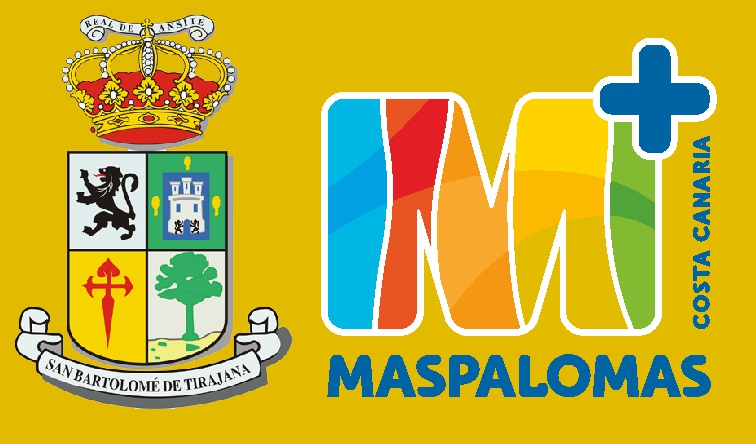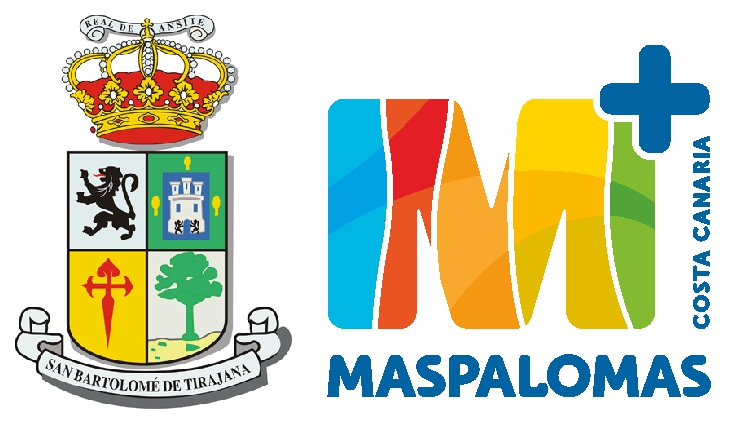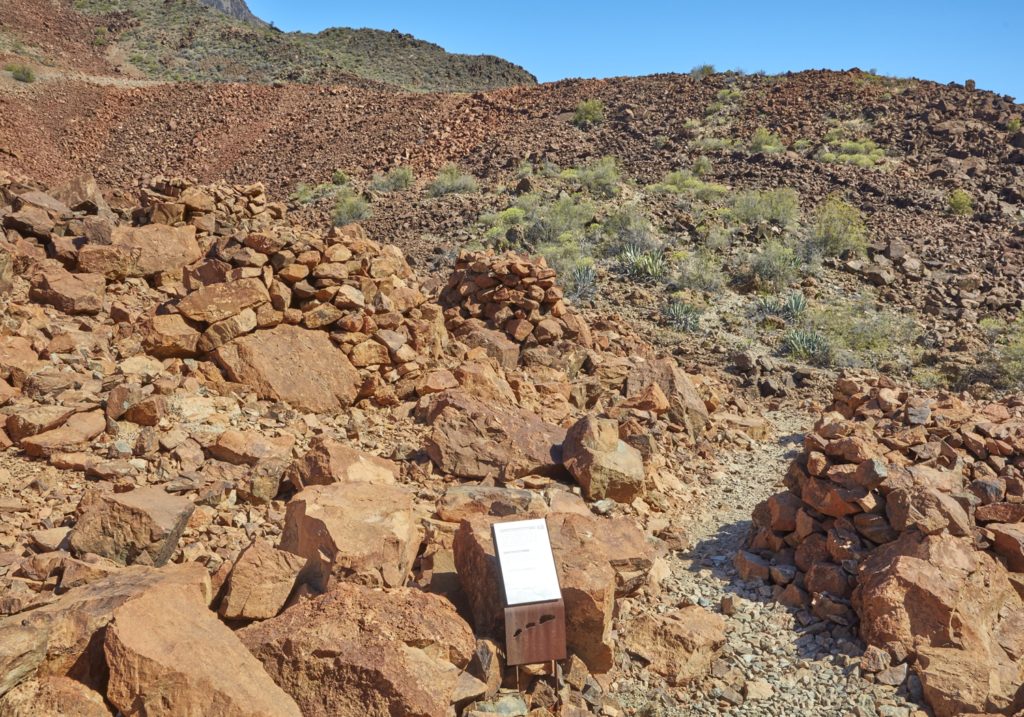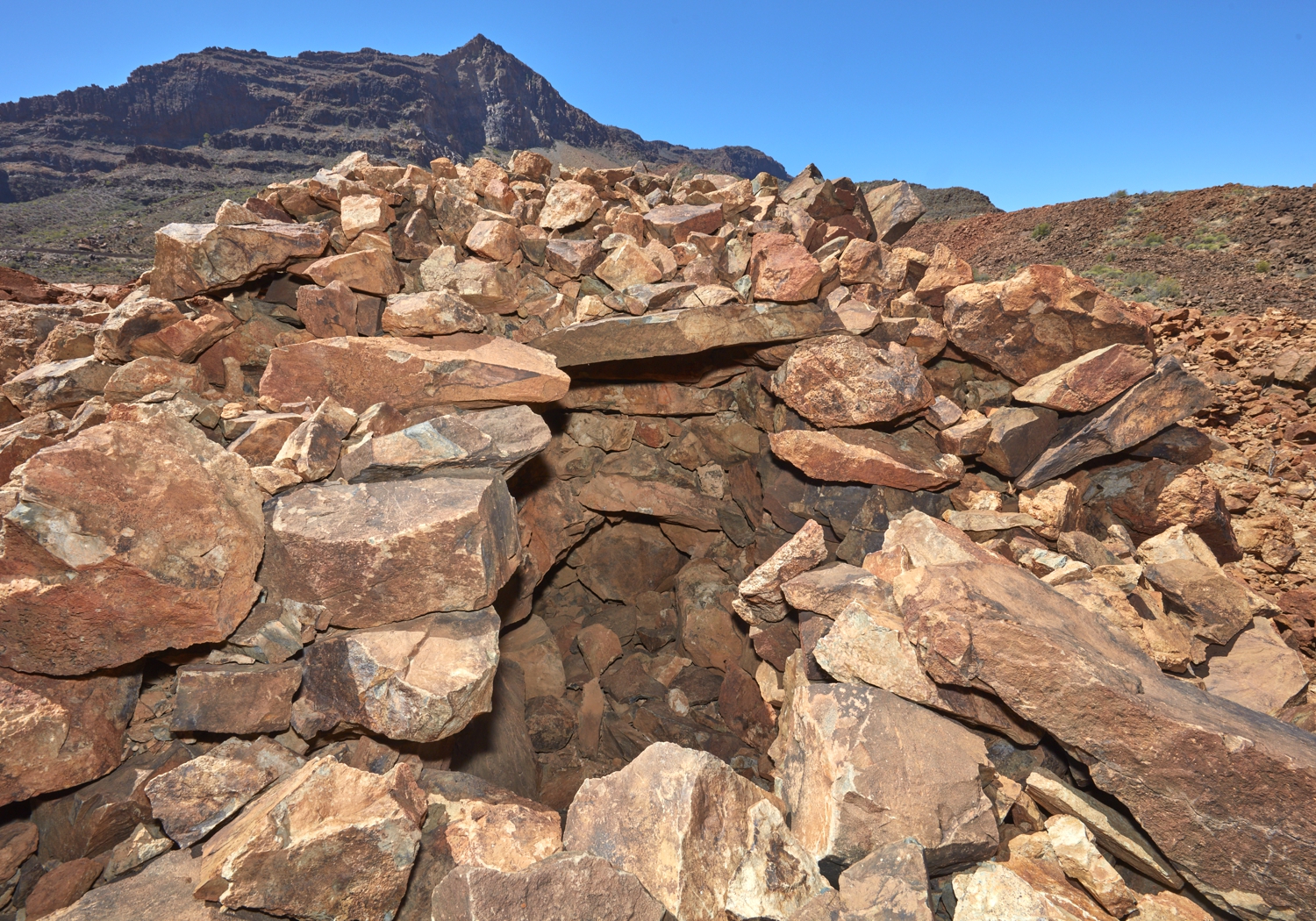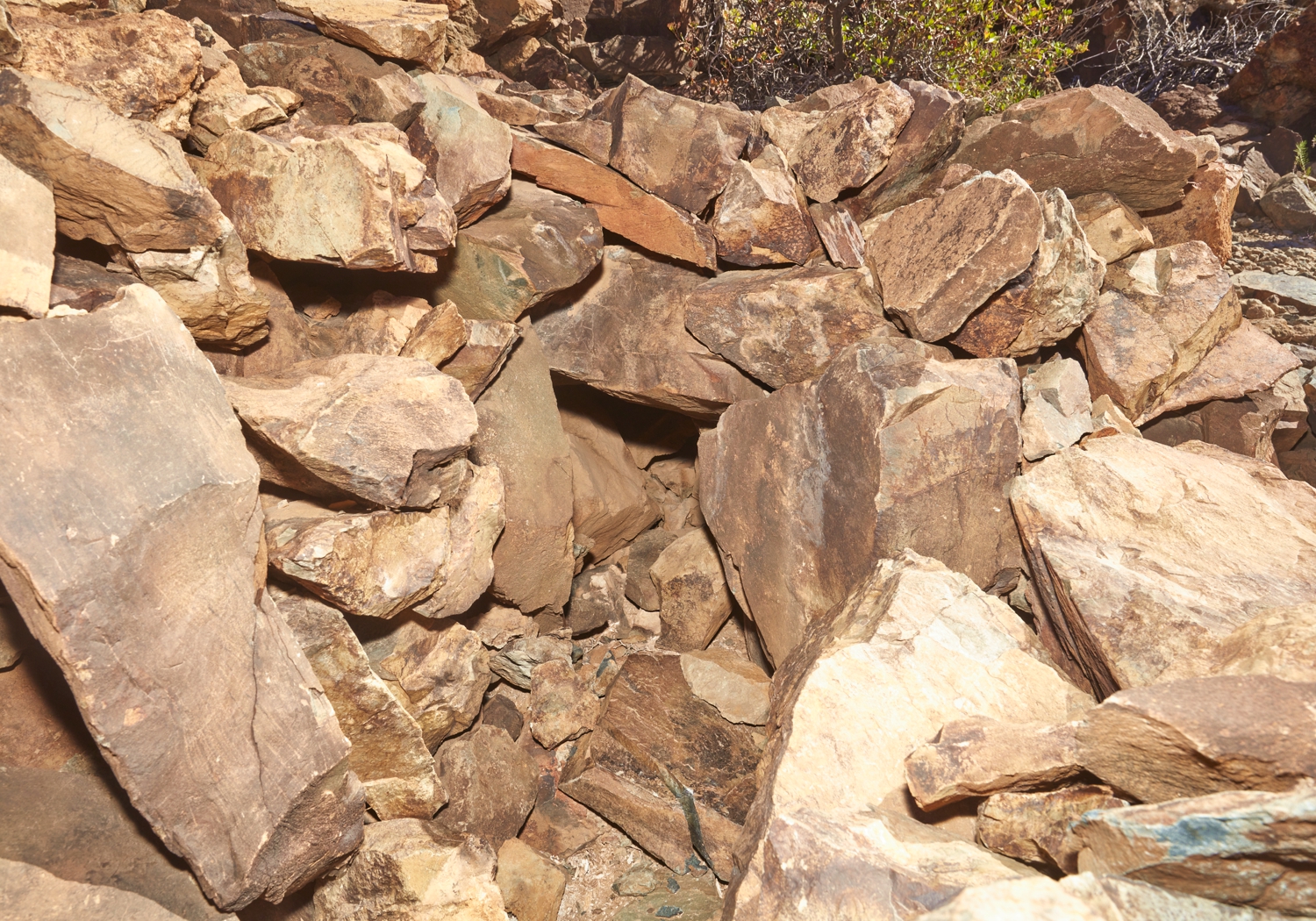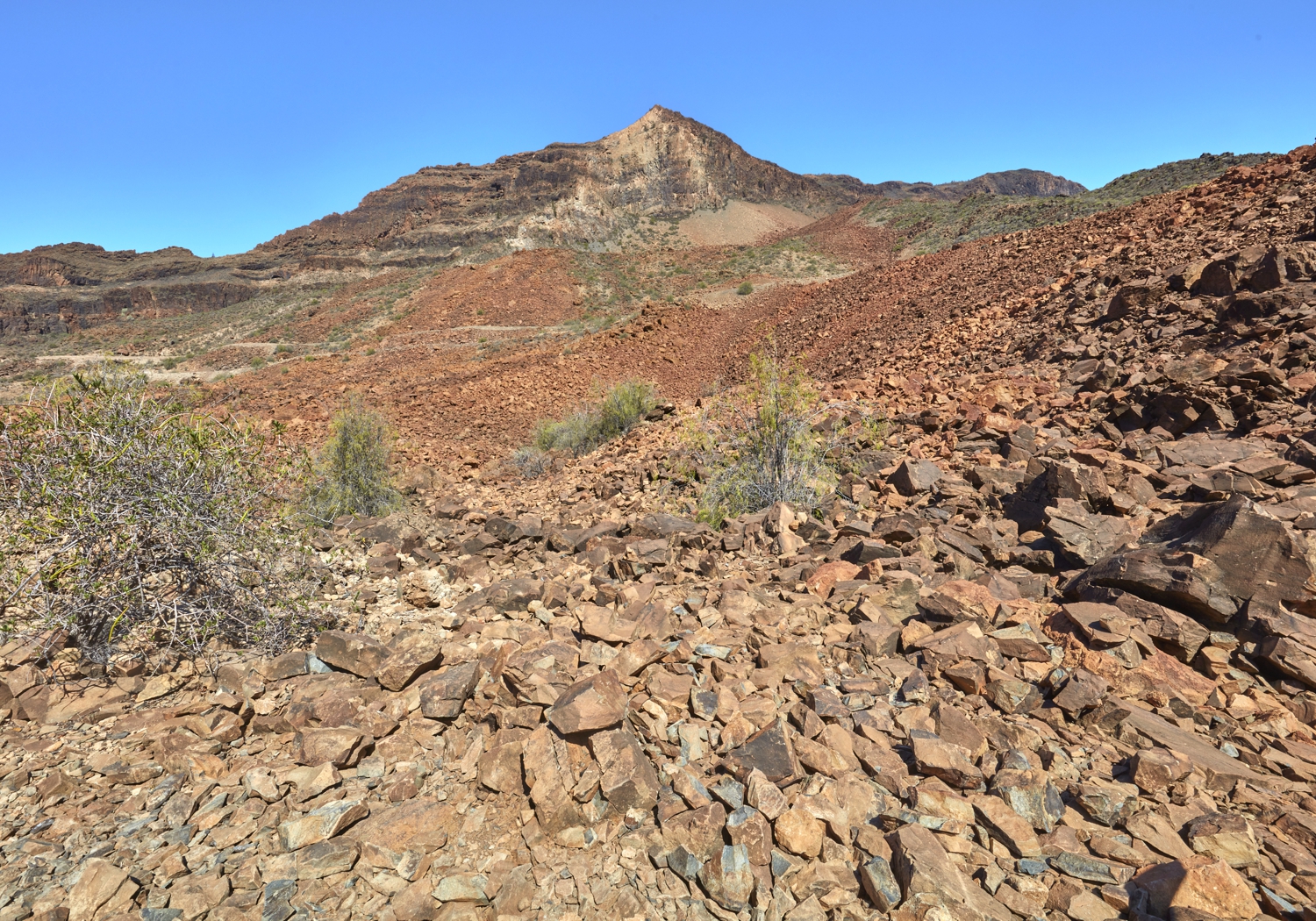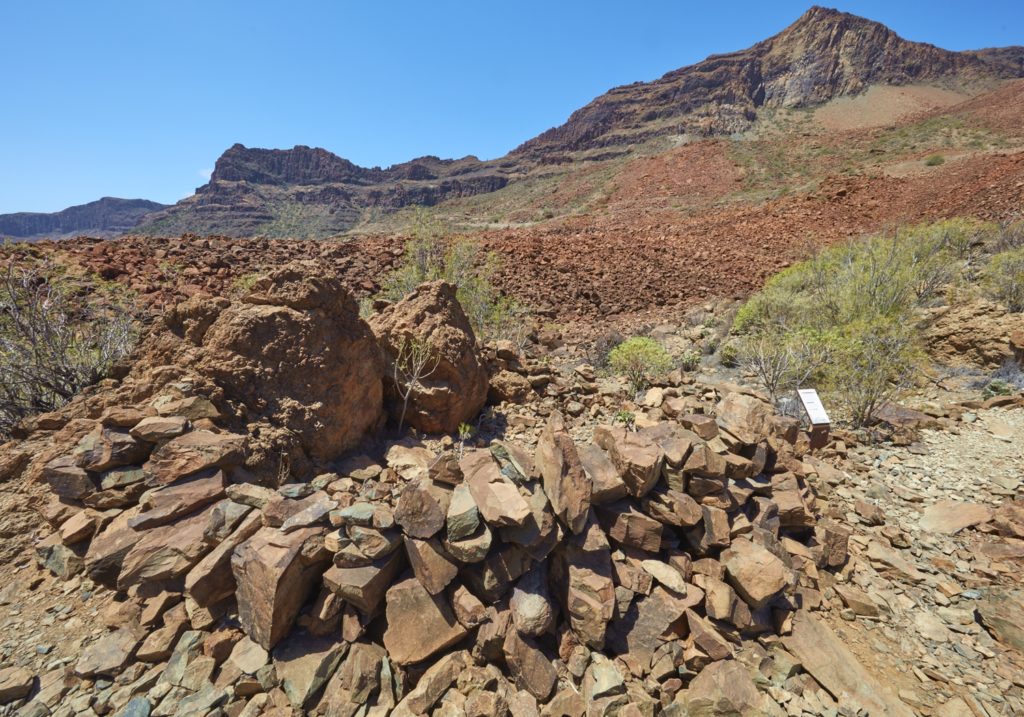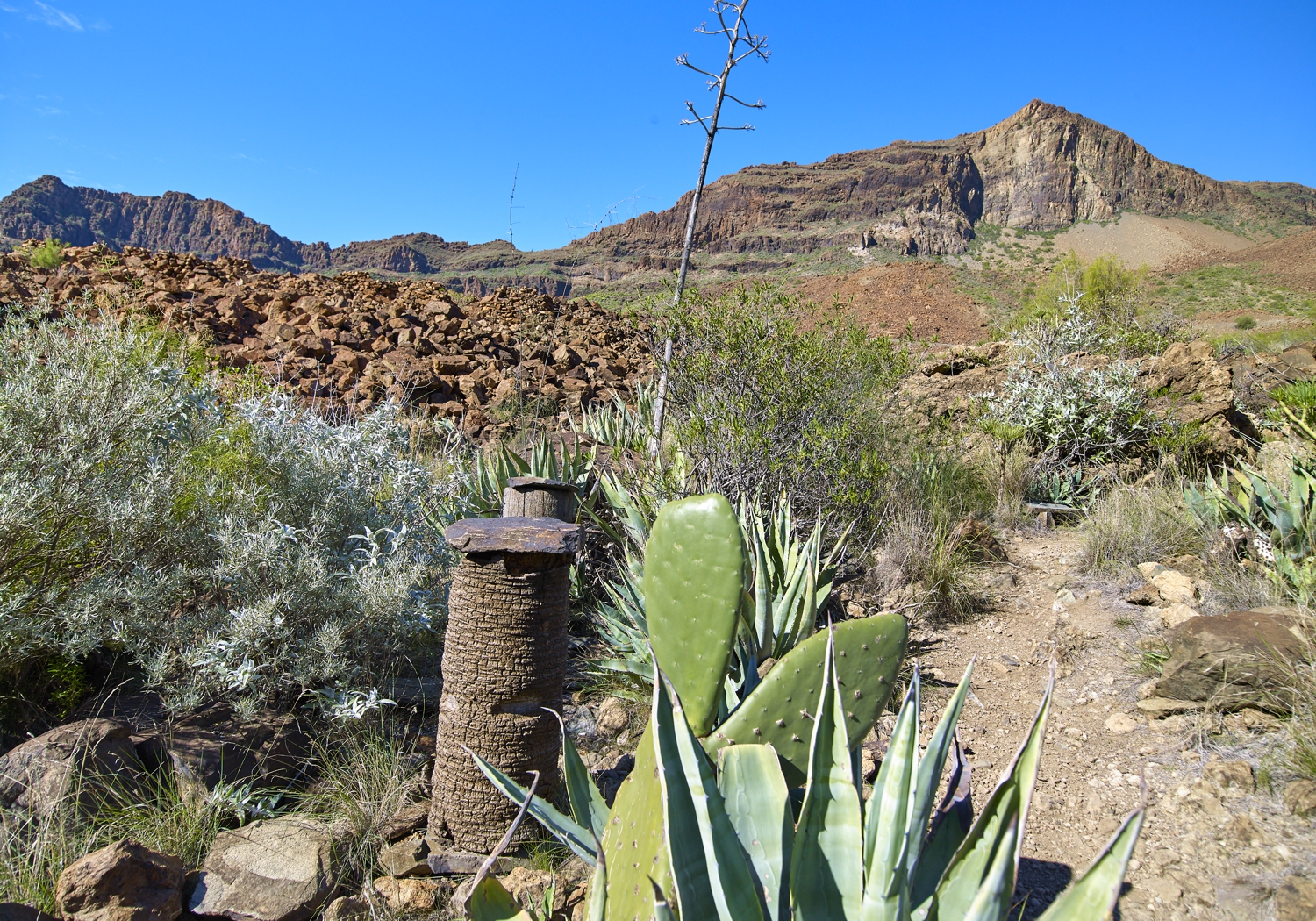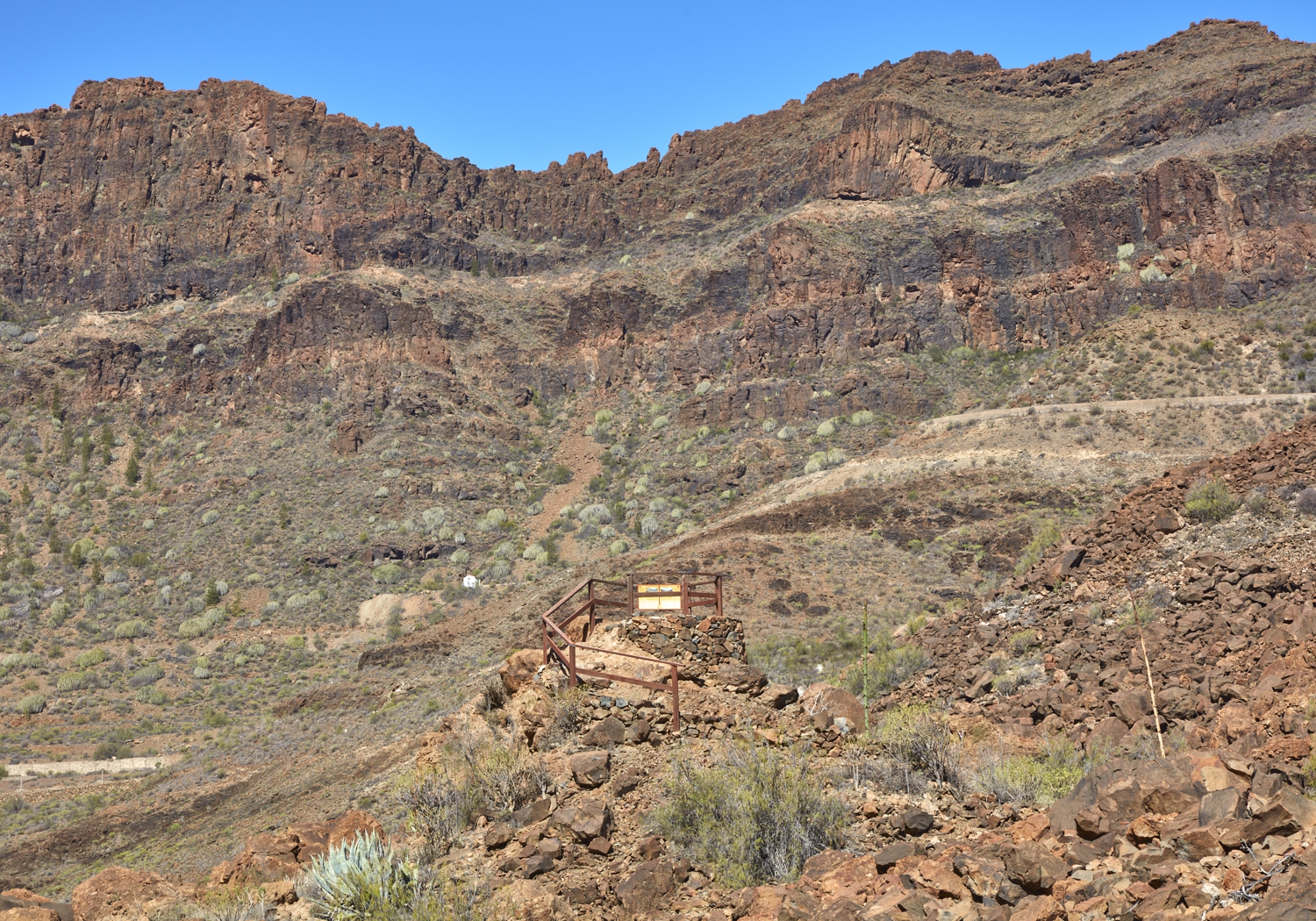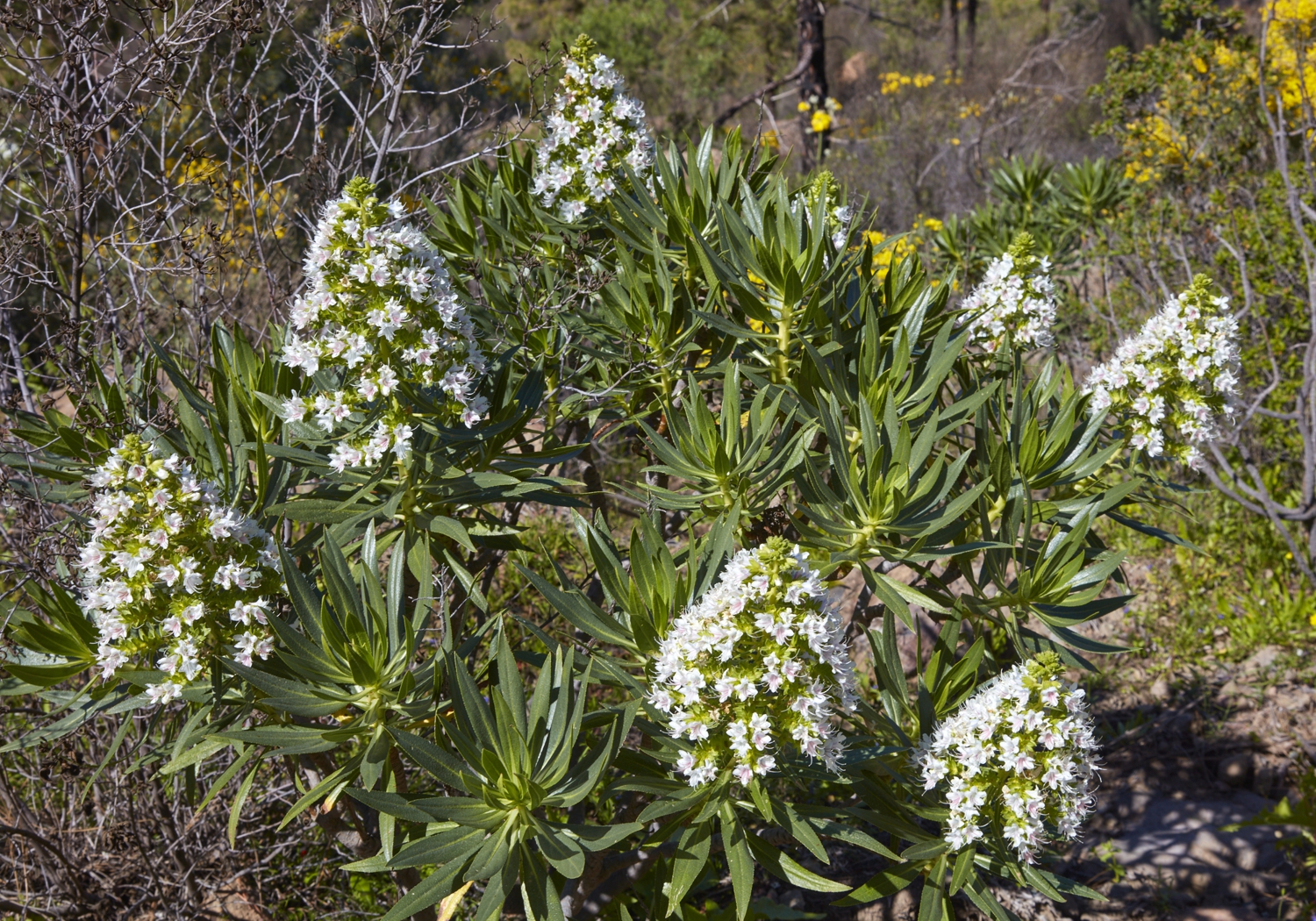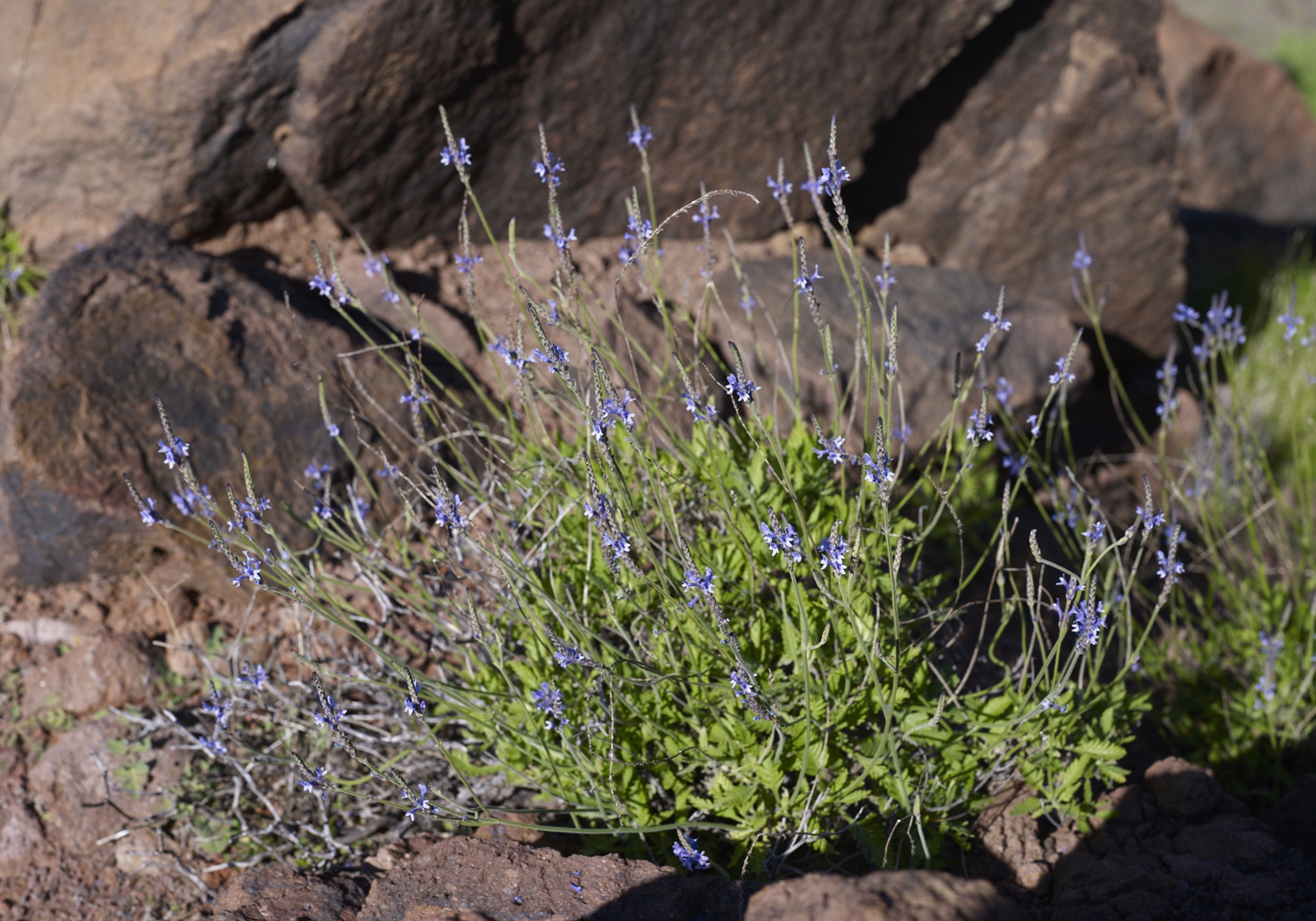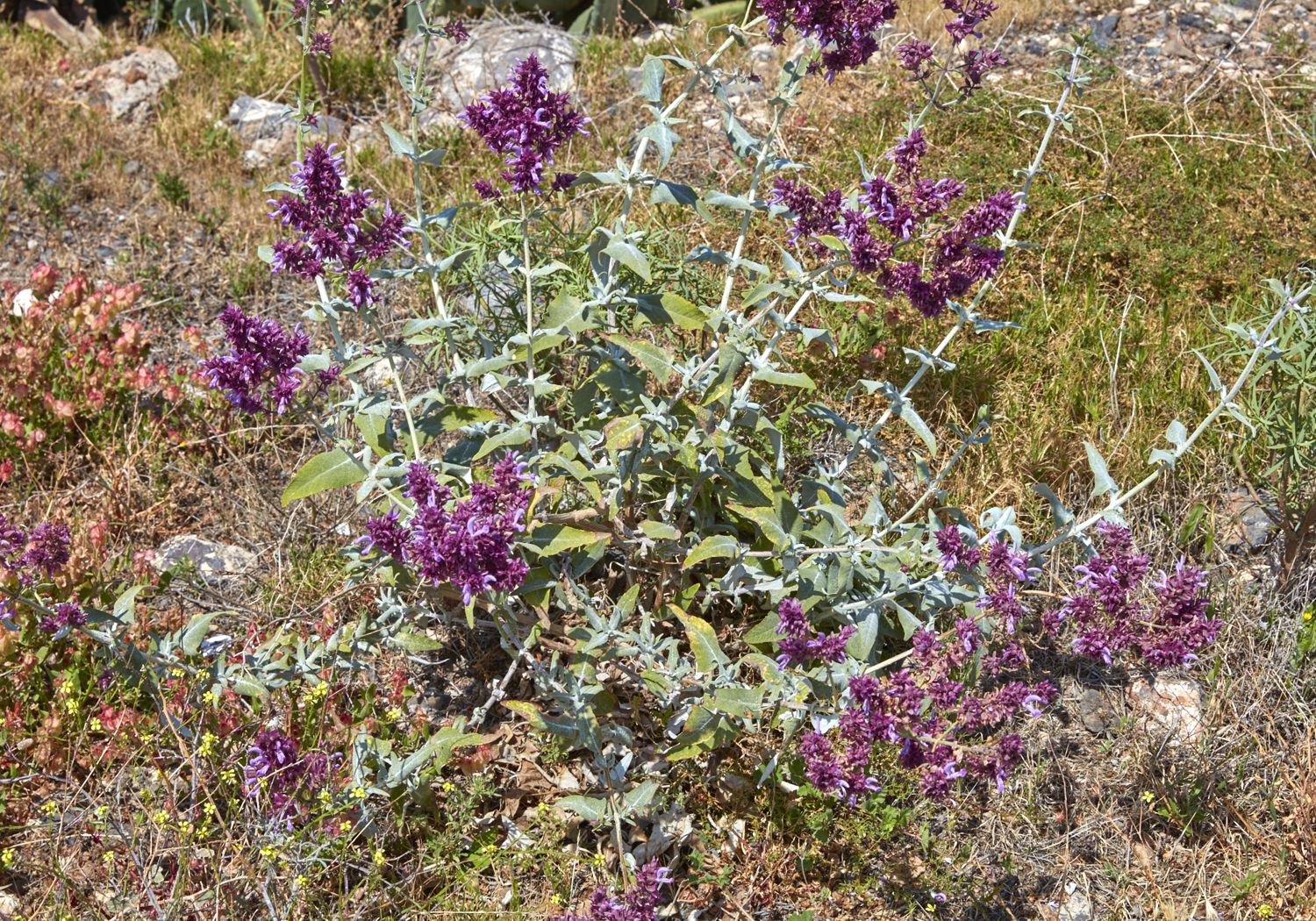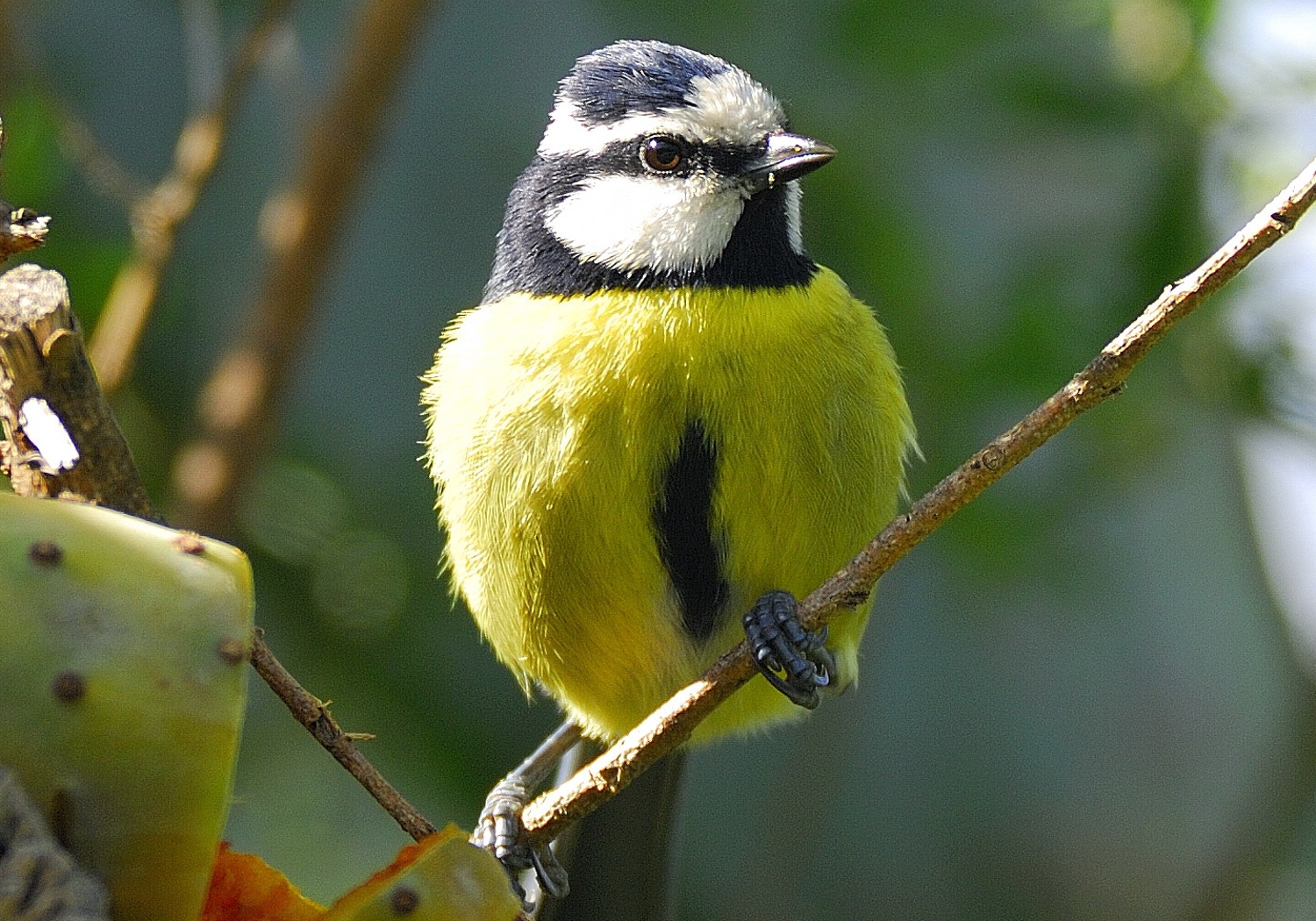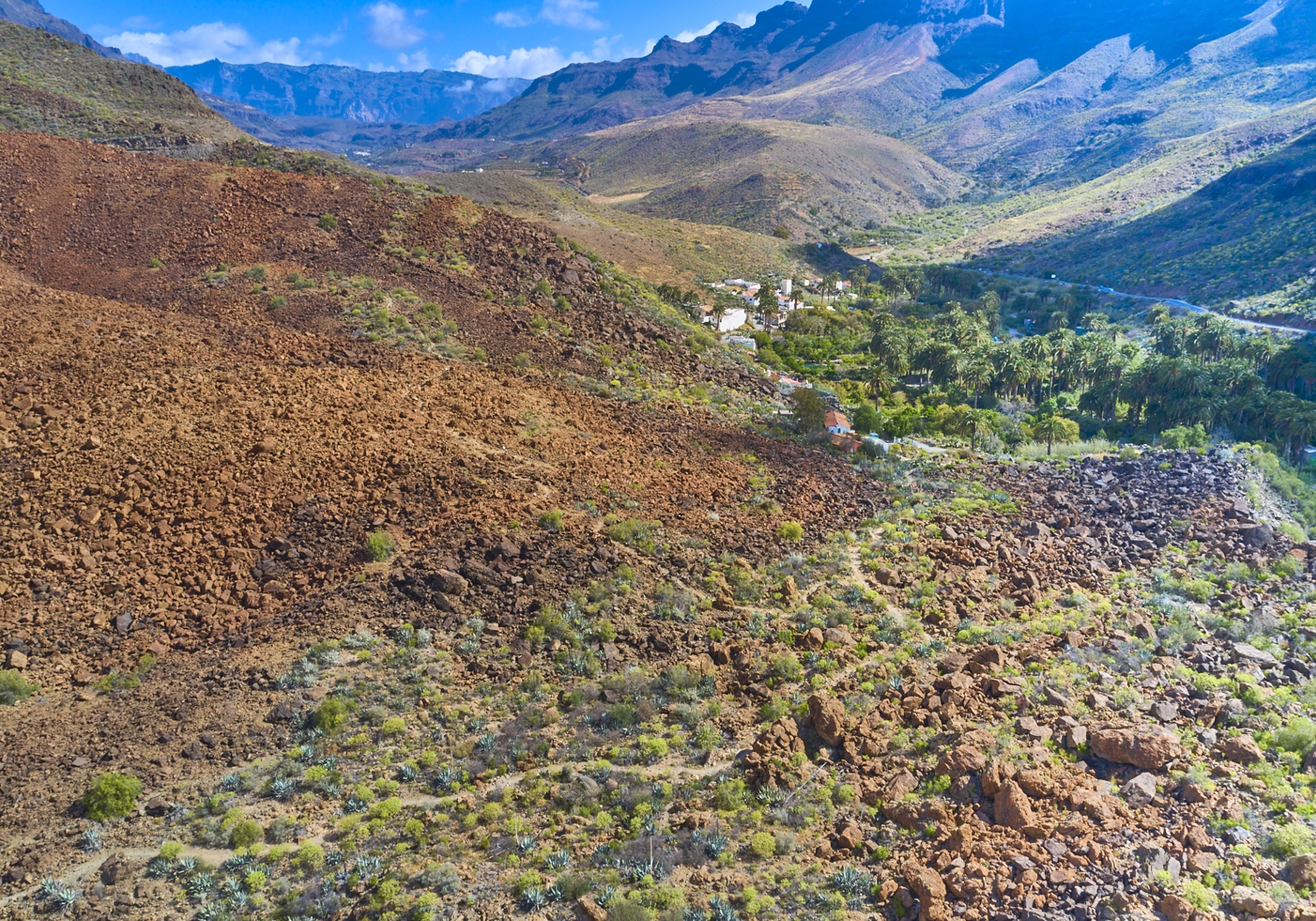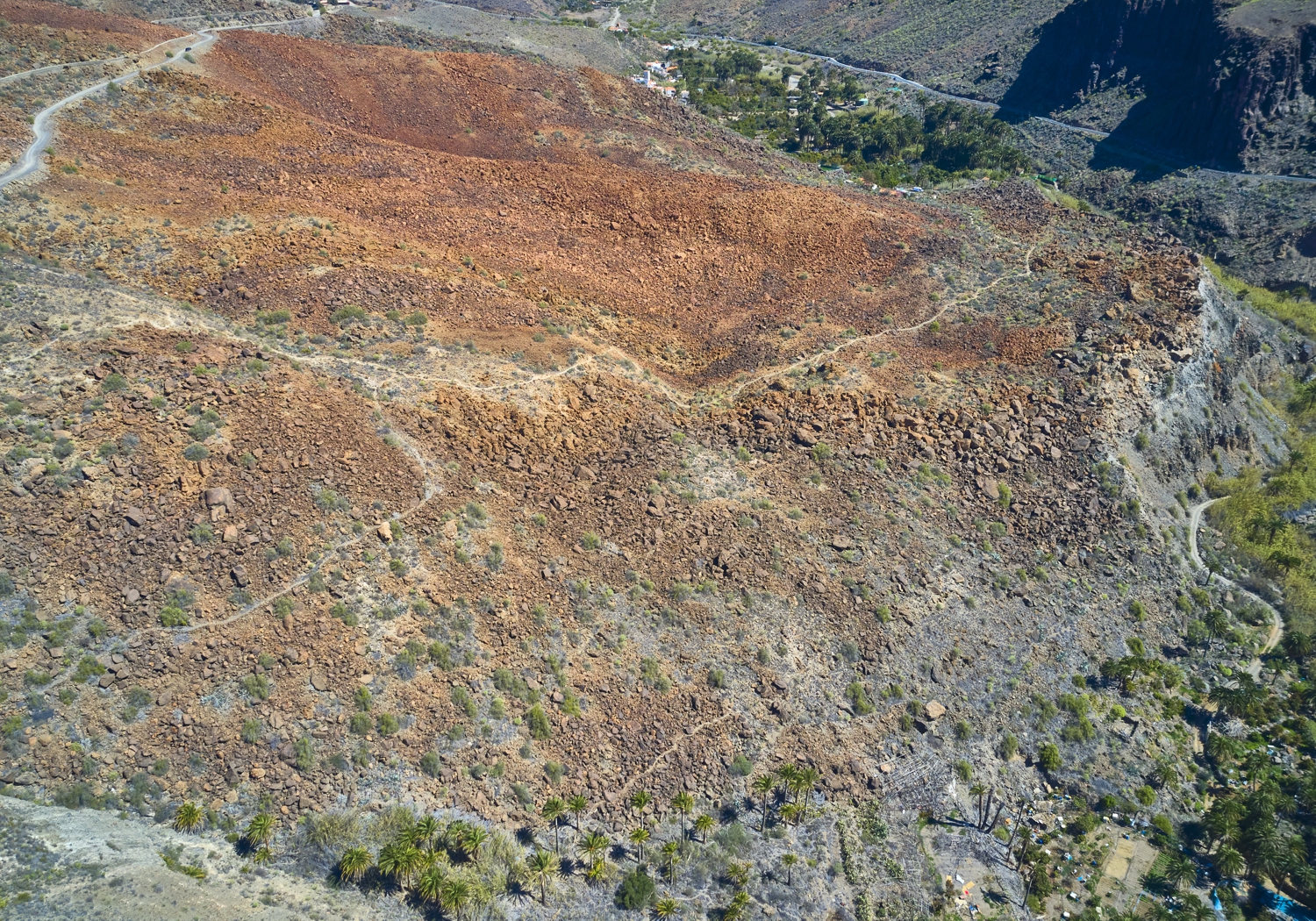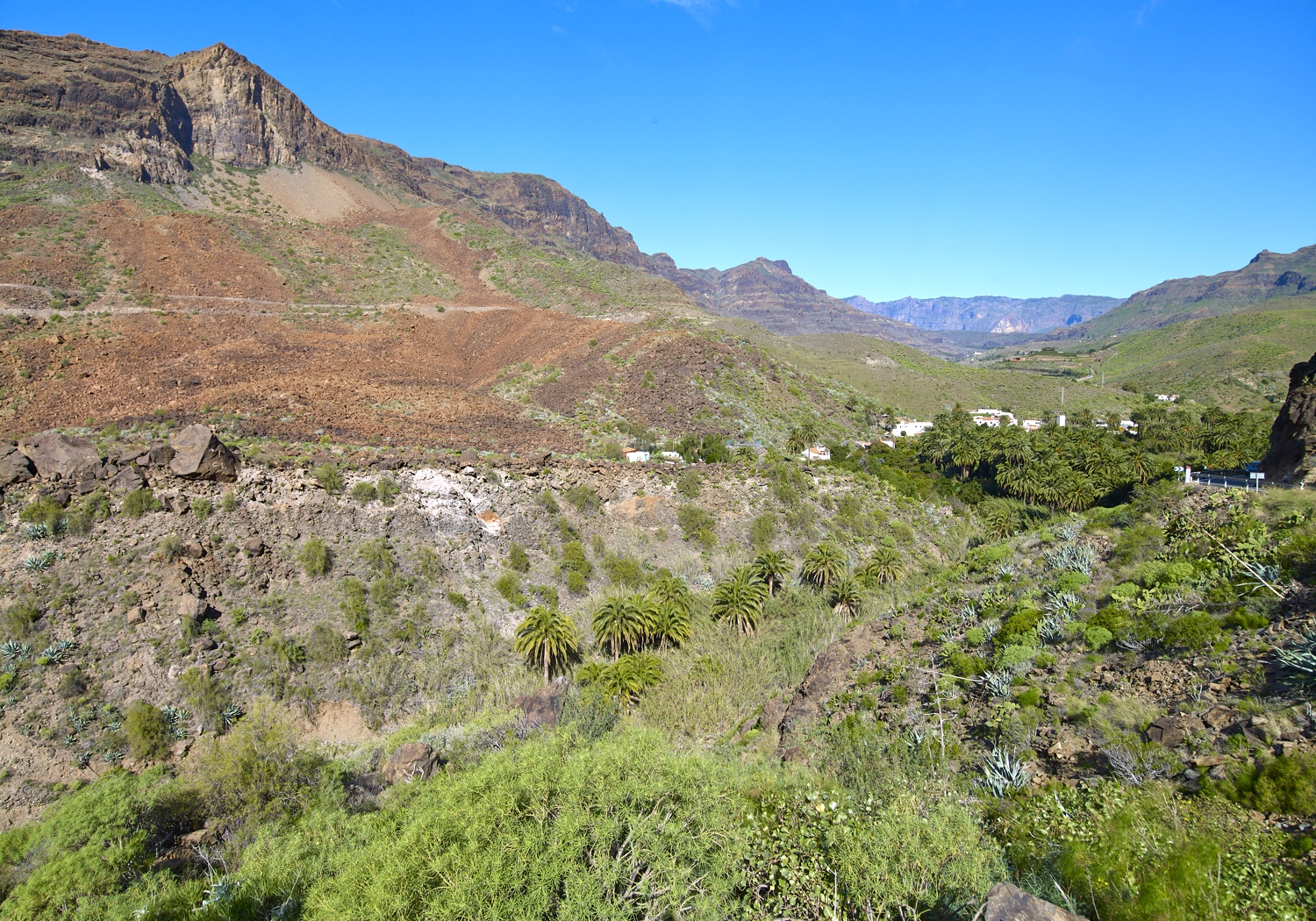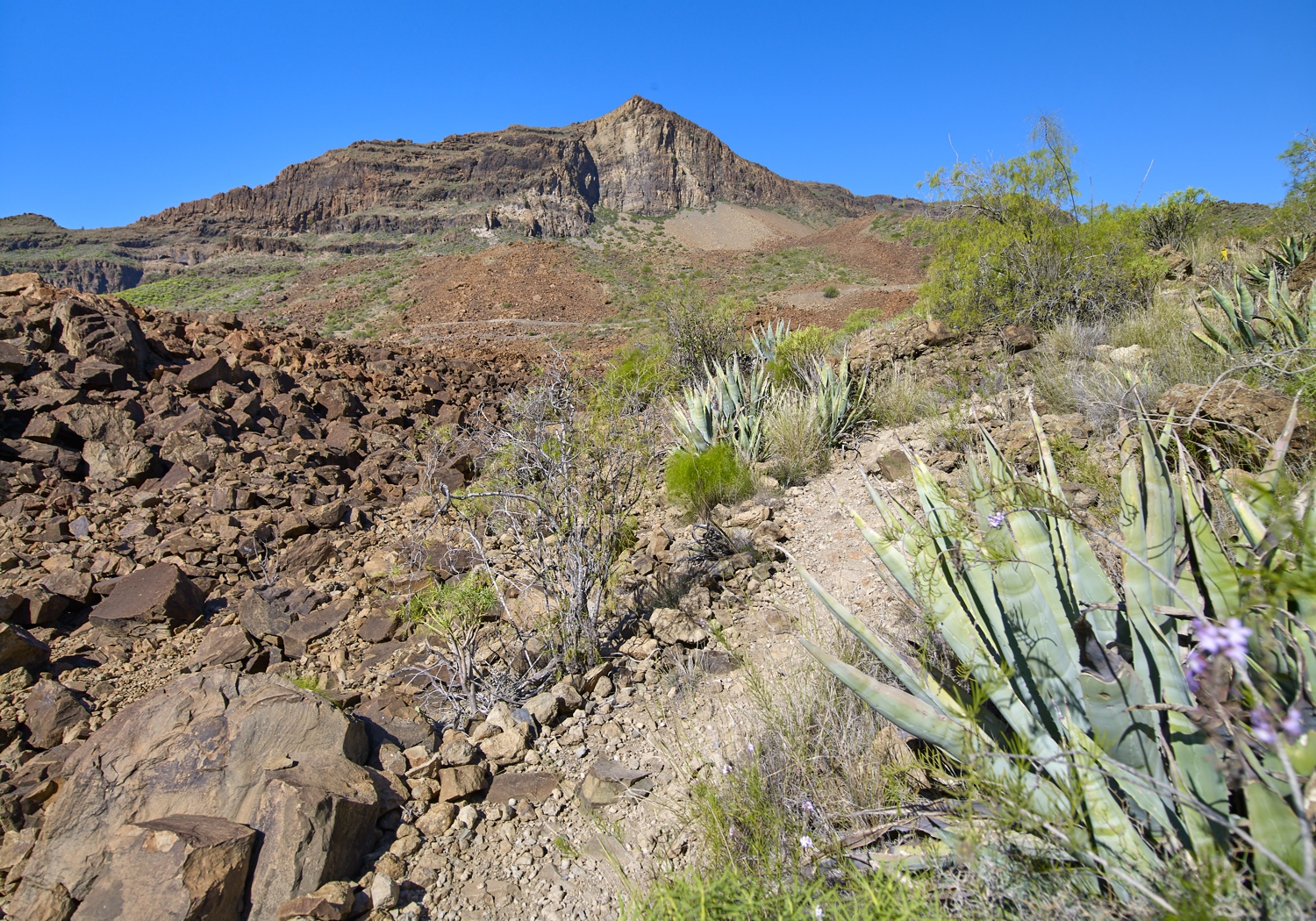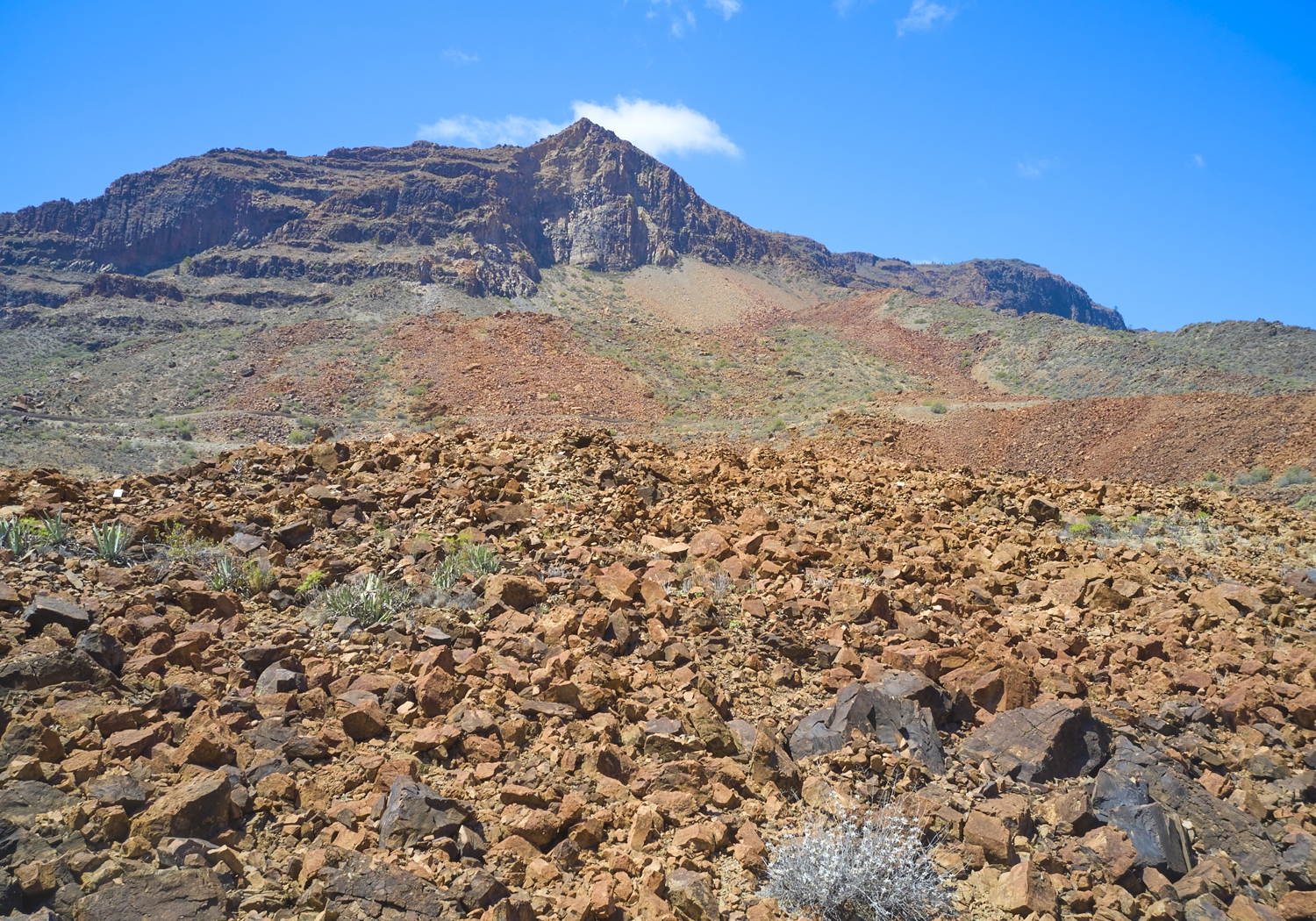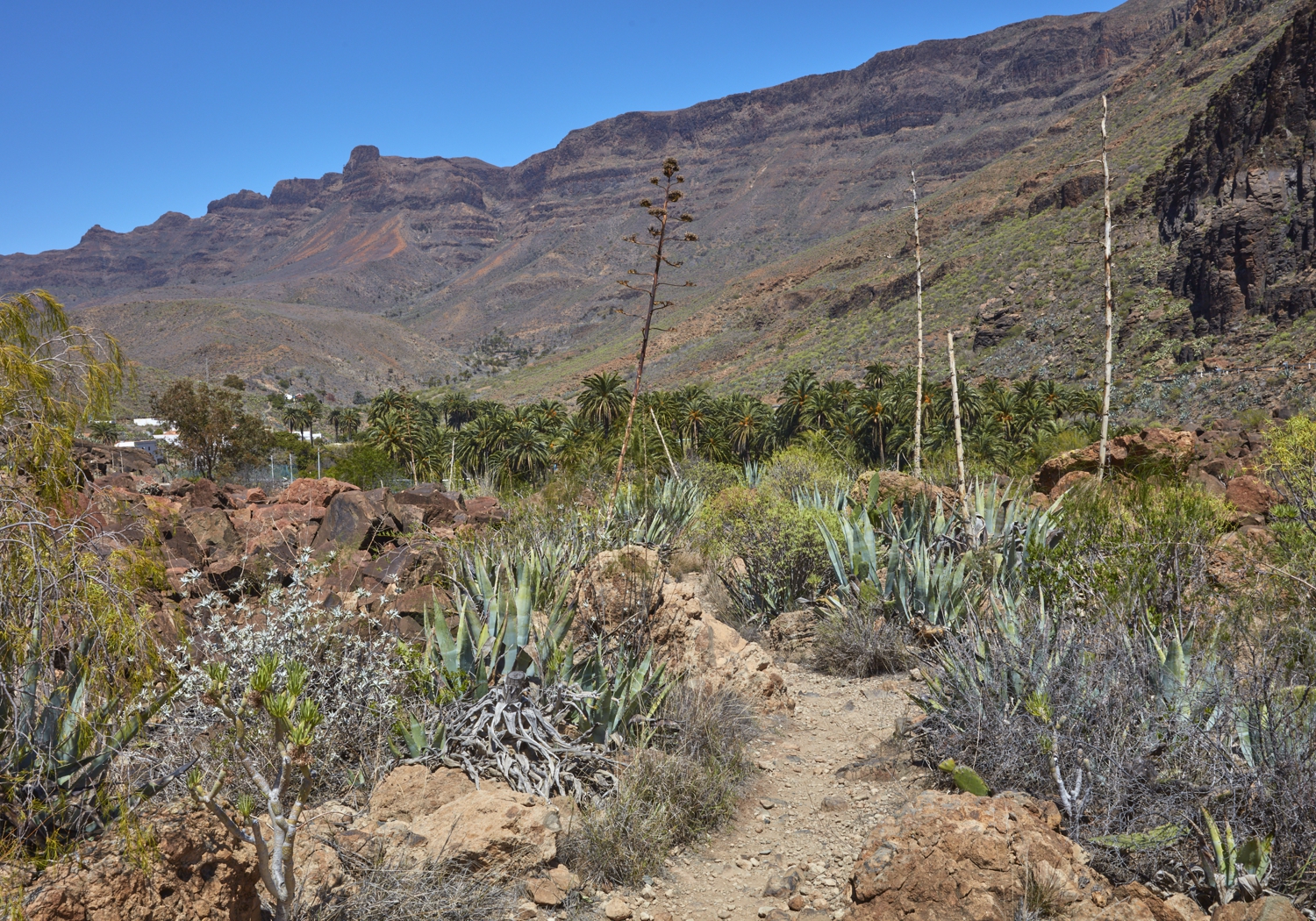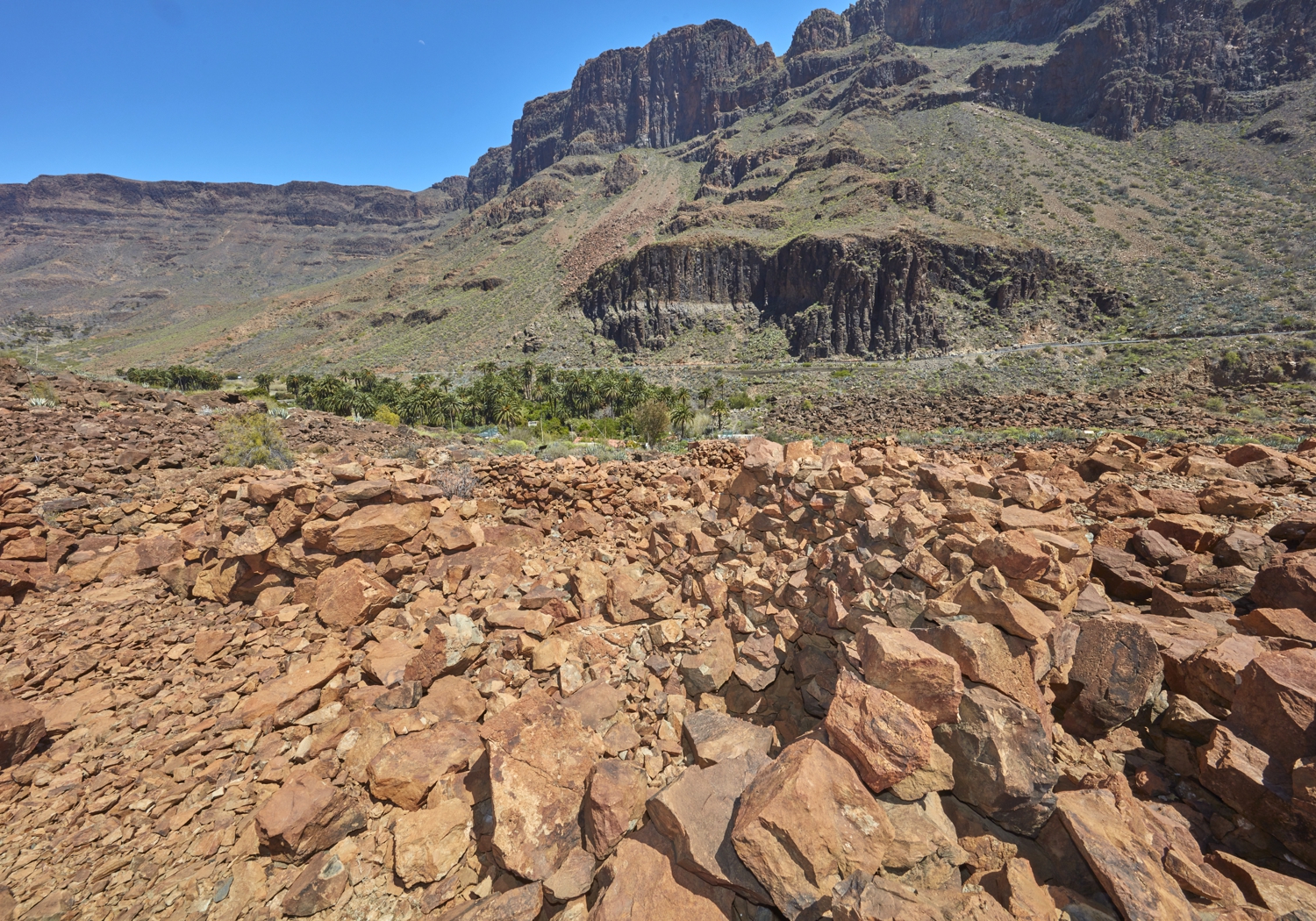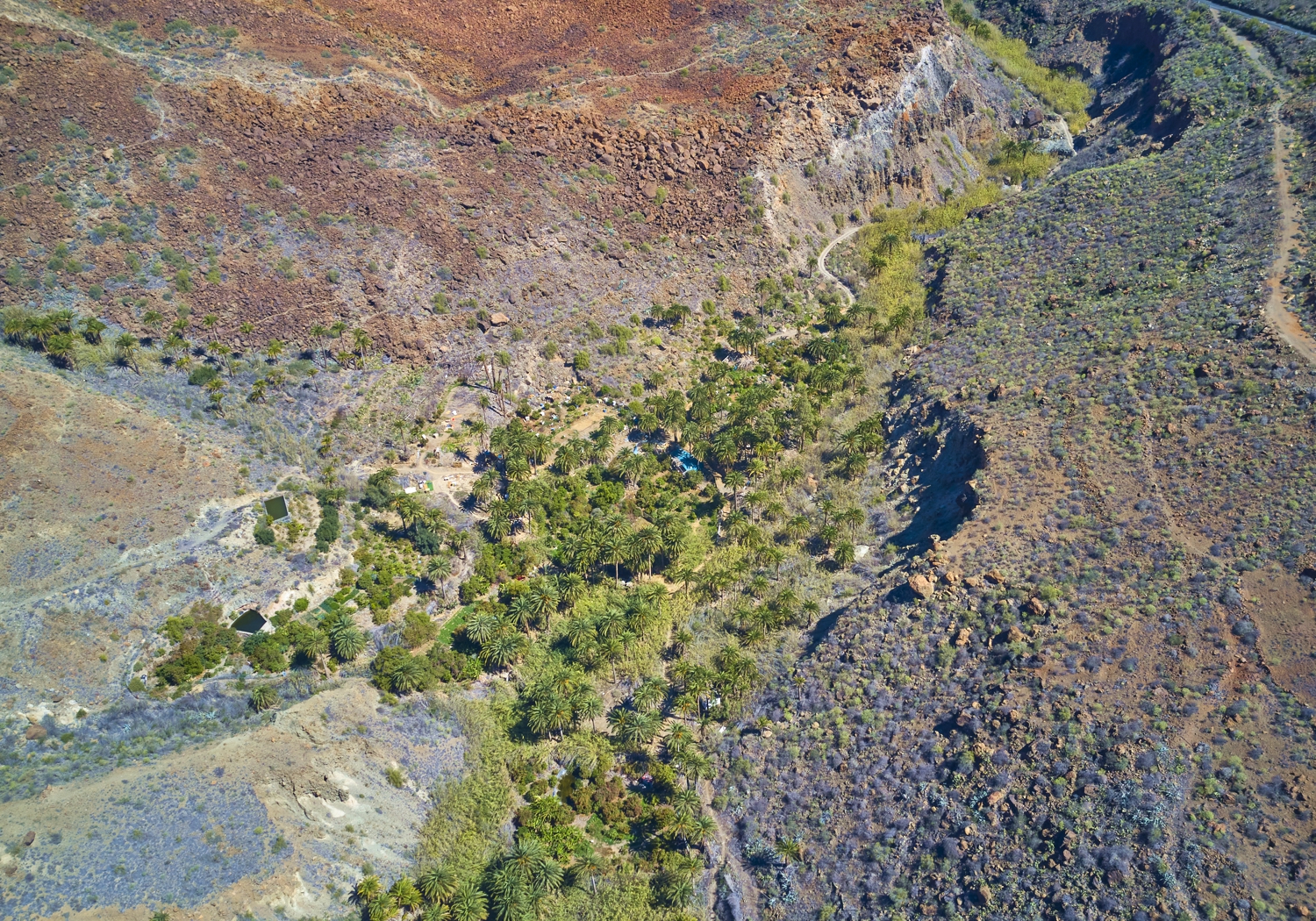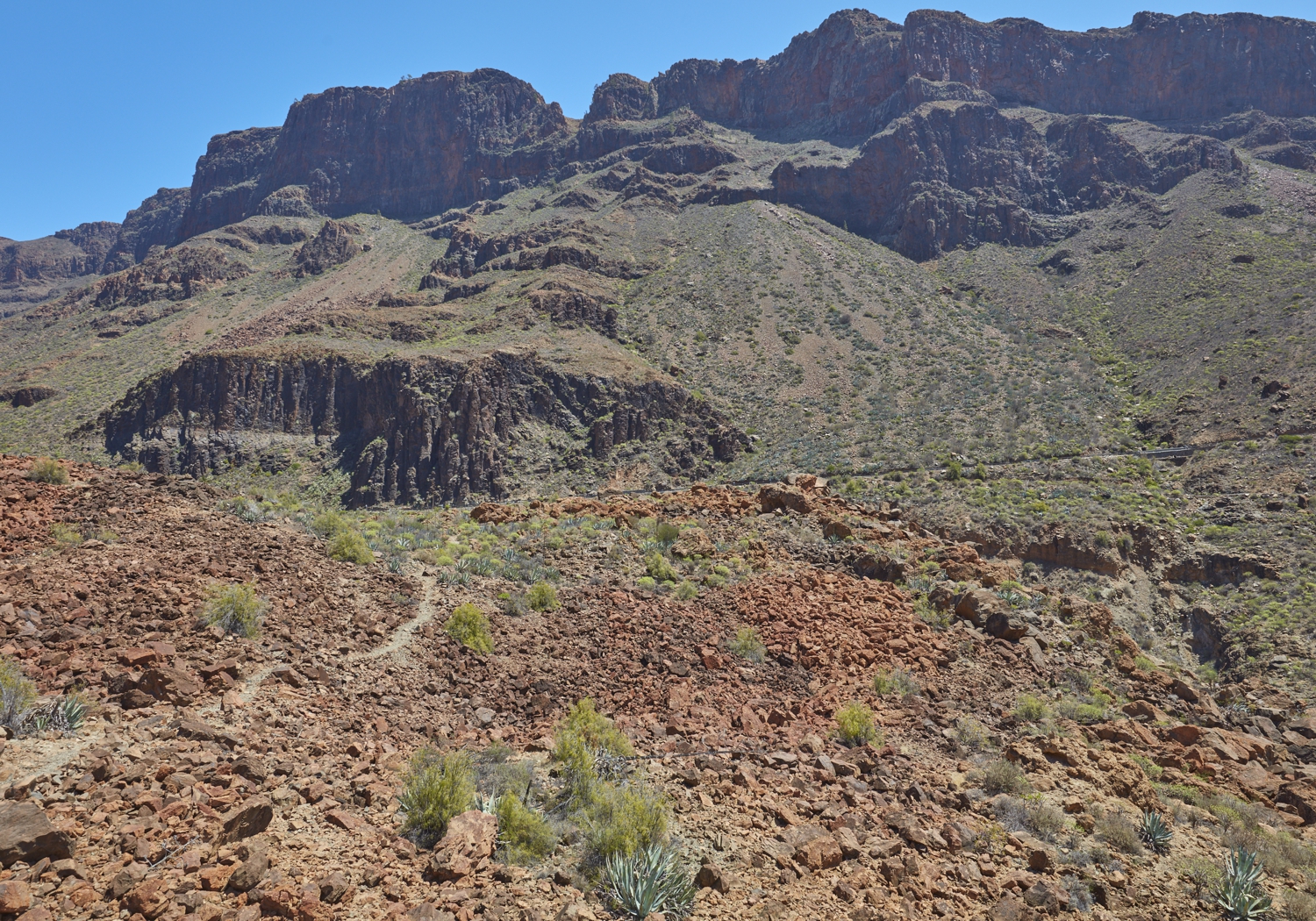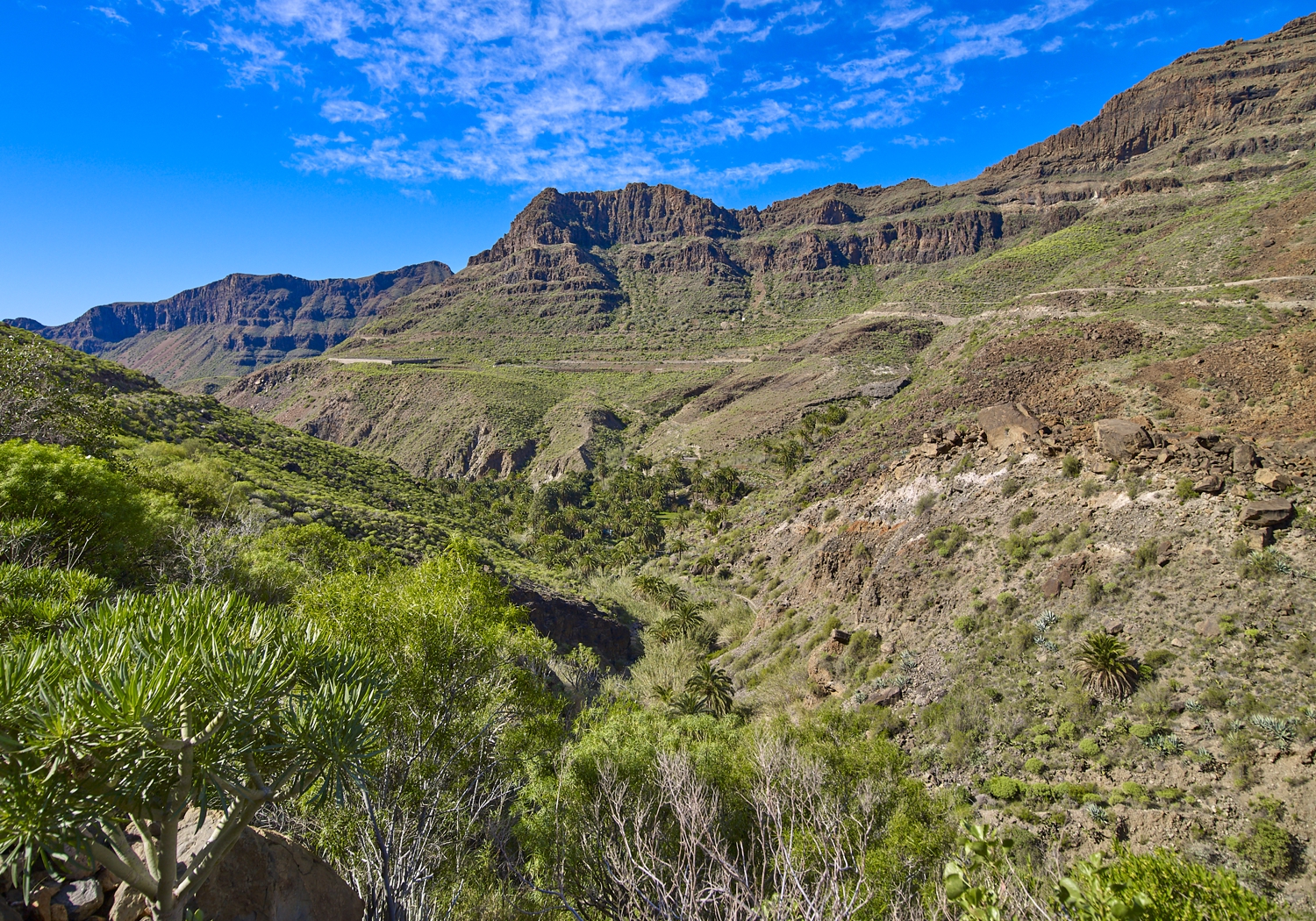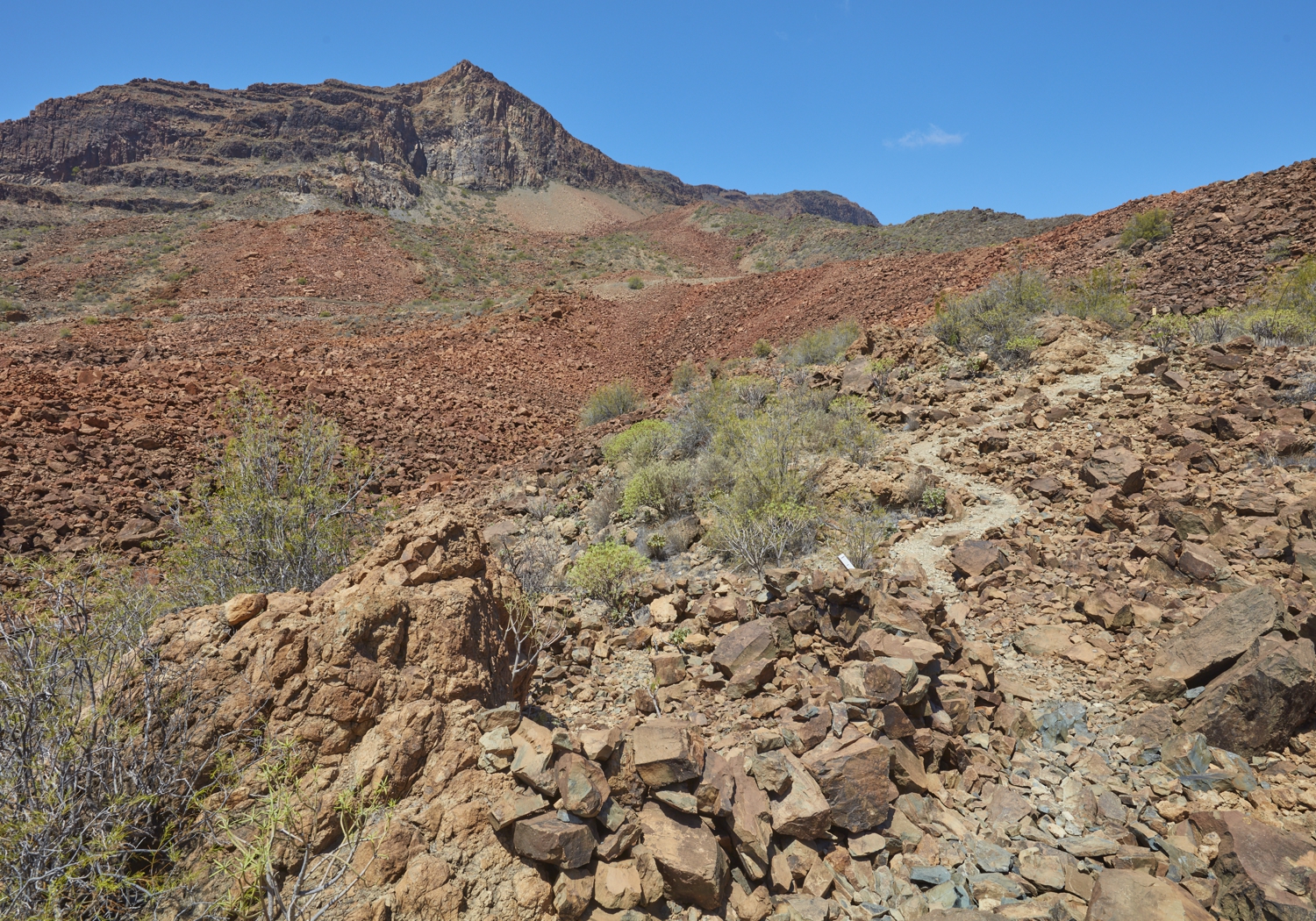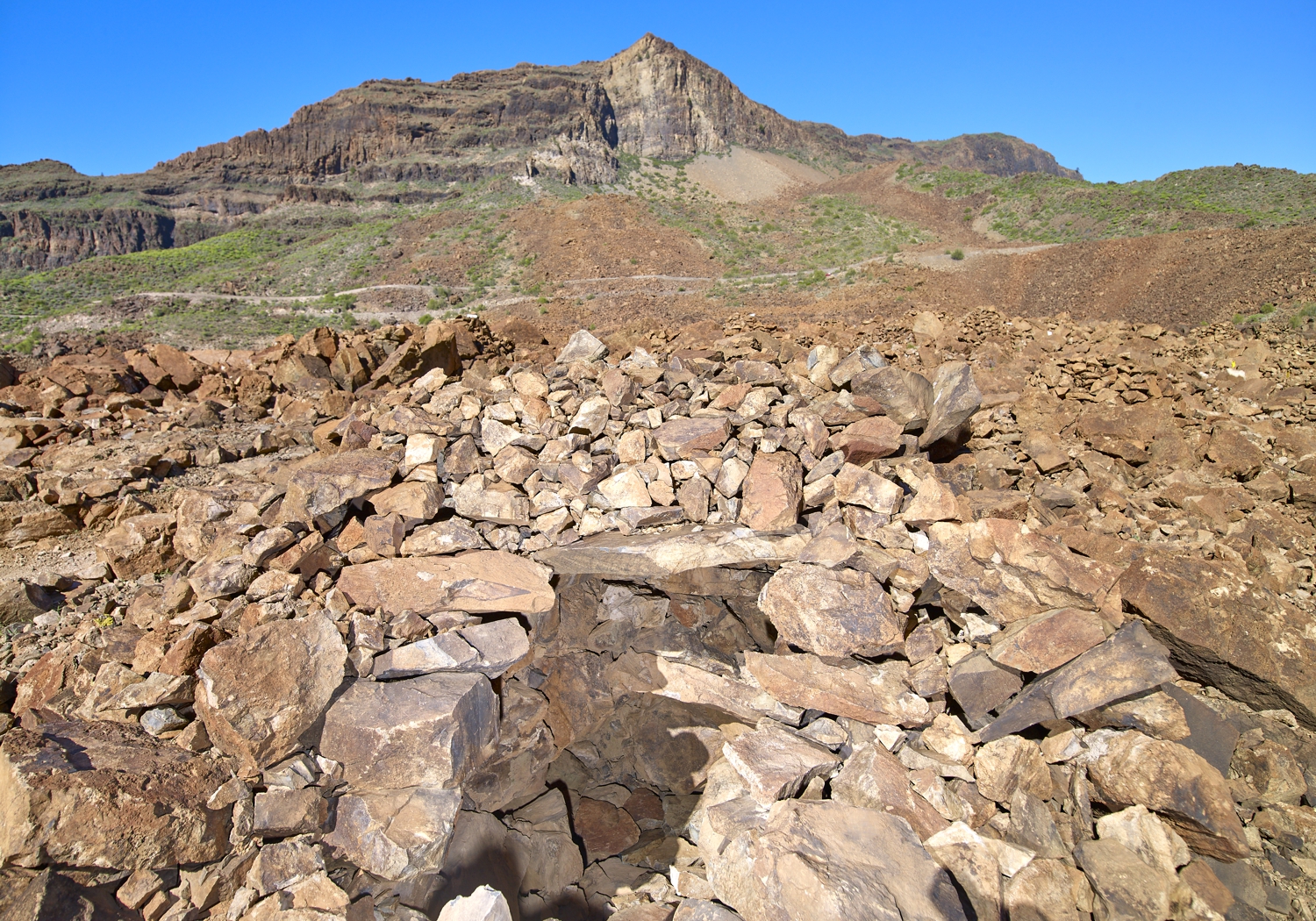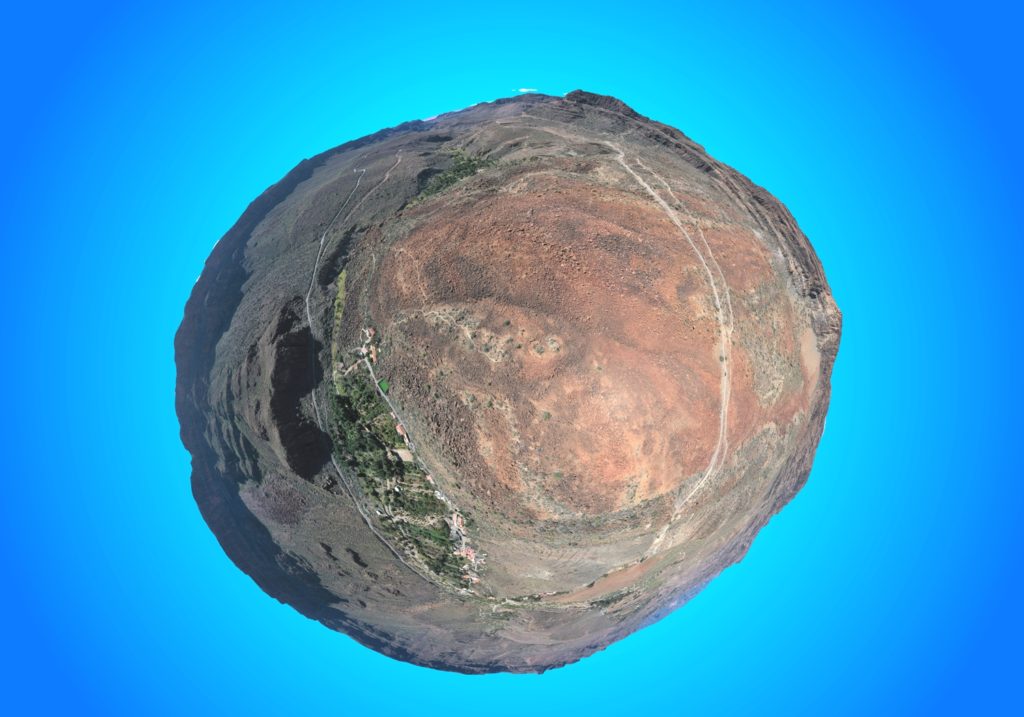Necropolis of Arteara
For the protohistory of Gran Canaria, it is a frequent occurrence to find large burial mound cemeteries in areas of badlands, taking advantage of the surrounding stones for their elaboration.
The Necropolis of Arteara occupies an area – that is two kilometres long by one kilometre wide. It is located by the village of Arteara, in a spot where the contrast between the green palm trees and hardness of the rocks gives it an unique beauty. For a wide range of reasons, it is one of the essential sights on the island of Gran Canaria
This pre-European burial site is made up of more than a thousand burial mounds. A very high percentage of the structures are simple mounds – i.e. a funerary space protected by a pile of stones (covered tumulus). They are not totally homogeneous, but their adaptation to a terrain means that there are differences between them (isolated mounds, attached to rock outcrops, etc.), some in conical shapes, ovoid, etc. The placement of a single body in each of these structures seems to be the norm, but there are also mounds for more than one individual.
Download the site location for Google Maps – Earth
